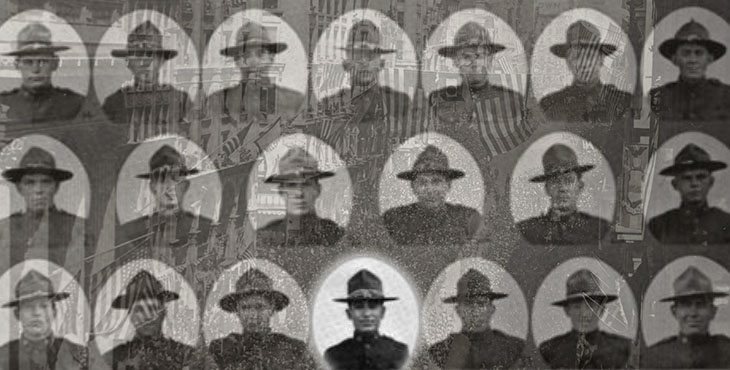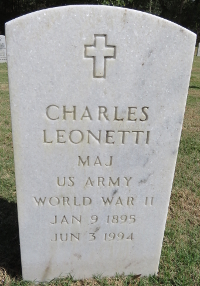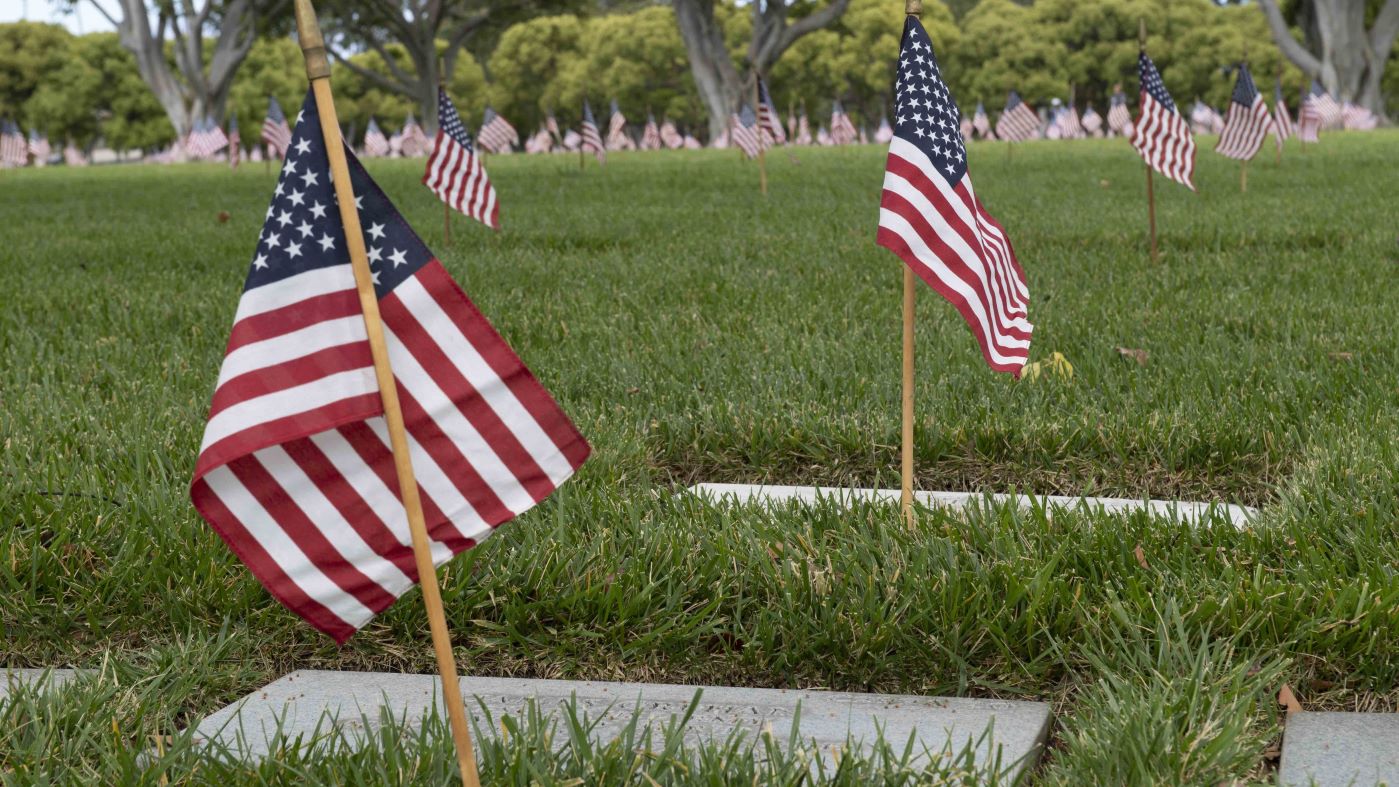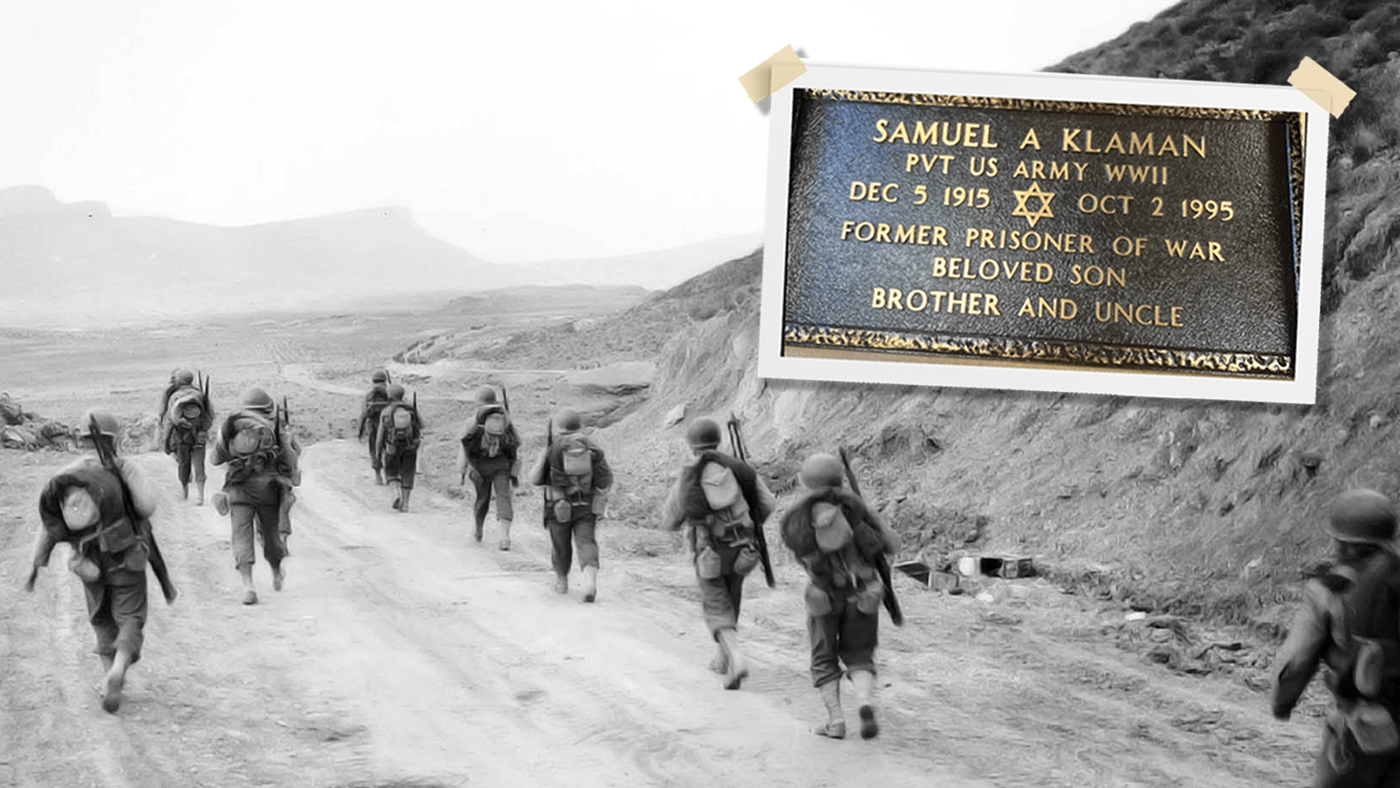Maj. Charles Leonetti immigrated to the United States from Italy in the early 1900s. When the United States entered World War I, he enlisted in the U.S. Army despite not yet being a U.S. citizen. He later became a well-known artist in New York and served again during World War II.
Leonetti was born in Naples, Italy on January 9, 1895. He immigrated to New York City as a teenager sometime around 1910. There, he studied at the Cooper Union which provided free education to low-income and working-class students. Leonetti joined the school’s Art Student League in 1913 and was mentored by the American painter Robert Henri.

Photograph of Company G, 105th Infantry Regiment. Charles Leonetti appears on bottom row, fourth from left.
The United States entered World War I on April 6, 1917. A few months later, Leonetti enlisted in the U.S. Army. He served in Company G of the 105th Infantry Regiment and participated in two iconic operations. Leonetti and the 105th fought alongside the British Expeditionary Force in the trenches of Flanders during the Battle of Lys, and later the Second Battle of the Somme.
The Army discharged Leonetti in April 1919. He immediately joined the Army Reserve and attended officer’s training. In May 1920, Leonetti became a naturalized U.S. citizen, a process that Congress made easier for Veterans of World War I that had received an honorable discharge.
Leonetti returned to the Art Students League in New York City and began gaining notice for his work. He focused mostly on painting and photography, but also became an actor in movies and danced on Broadway. He became revered in photography and began photographing famous Broadway Stars. His connections earned him an appearance in the Broadway play The Miracle and the opportunity to photograph the portrait of the lead actress, Lady Diana Manners. His experience landed him an executive position in the Macy’s photography department. There he met more famous figures, including Elanor Roosevelt.
Leonetti began operating his own photography business and earned more income than his position at Macy’s. When the stock market crashed in 1929, Leonetti’s business suffered substantial financial loss. However, he remained undeterred in the years of the Great Depression and continued his work. His reputation continued to draw business and allowed him to keep operating without the need to lower his prices.
He married Mayme Laurel Sellers in July 1939. The couple lived in Manhattan for two years before Leonetti entered the Army again as a Reserve officer just after his 46th birthday. During World War II, Leonetti served in Germany during the occupation of Berlin following the Allied Victory in 1945.
After his discharge in August 1946, Leonetti and his wife moved to Tampa, Florida where they both remained active in the art community. Leonetti maintained an art studio while his wife served as the director of the Tampa Art Institute, now the Tampa Museum of Art. Both advocated for the importance of education for Veterans after the creation of the G.I. Bill.
Charles “Carlo” Leonetti passed away on June 3, 1994 at the age of 99. He is interred at Florida National Cemetery in Bushnell, Florida.
In 2017, the Veterans Legacy Program partnered with the University of Central Florida to conduct research on Veterans interred at Florida National Cemetery. Students and faculty produced biographies for over 100 Veterans, one of whom is Maj. Leonetti. You can read the biography written by a student here.
If you would like to learn more about the Veterans Legacy Program and the ongoing efforts to share the stories of Veterans in our national cemeteries please visit https://www.cem.va.gov/legacy/
Join us in honoring the life, service, and legacy of Maj. Charles Leonetti.
Topics in this story
More Stories
In November 2024, VA's National Cemetery Administration (NCA) officially opened new Green Burial sections at three national cemeteries.
Beginning on Nov. 9, 2024, VA will accept applications for payment of a monetary allowance for privately purchased OBRs and for OBRs provided by a grant-funded cemetery, when the OBR is placed at the time of interment. This allowance may be paid for burials that occurred on or after the effective date of the new authority which is Jan. 5, 2023.
With help from VBA and NCA, an administrative correction honored a WWII soldier's service and Jewish identity.








Bless you for keeping our American legacy’s a live. Our school children need to be taught about the lives of men and women like this who made this country what it is today. I have shared with my children and now grandchildren about our families military legacy going all the way back to the Civil War, Boxer Rebellion, WW II, forward to the Cold War, Vietnam, and the war against terrorism. Thank you sir for your interest and writings of people who helped shape this nation.
For a military-related article it lacks serious detail. What was his WW1 division? What did he do in the 105th Inf ? What was his WW2 unit/position? What did he do in Berlin? Get specifics when it involves military assignments.
Great article! There is a very good book just published recently on immigrants in the US Military during WWI. It’s titled “Forgotten Soldiers of World War I: America’s Immigrant Doughboys” written by Alexander F. Barnes and Peter L. Belmonte.